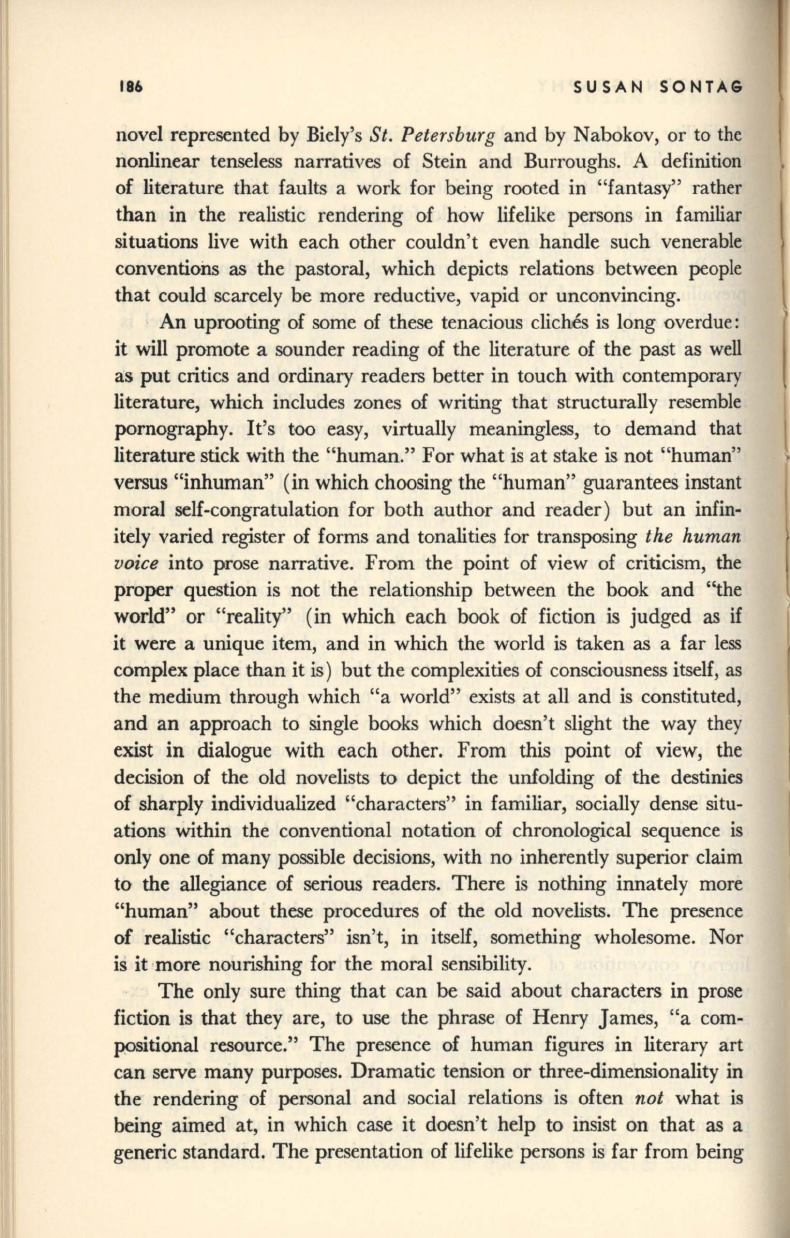
186
SUSAN SONTA6
novel represented by Biely's
St. Petersburg
and by Nabokov, or to the
nonlinear tenseless narratives of Stein and Burroughs. A definition
of literature that faults a work for being rooted in "fantasy" rather
than in the realistic rendering of how lifelike persons in familiar
situations live with each other couldn't even handle such venerable
conventions as the pastoral, which depicts relations between people
that could scarcely be more reductive, vapid or unconvincing.
An uprooting of some of these tenacious cliches is long overdue:
it will promote a sounder reading of the literature of the past as well
as put critics and ordinary readers better in touch with contemporary
literature, which includes zones of writing that structurally resemble
pornography. It's too easy, virtually meaningless, to demand that
literature stick with the "human." For what is at stake is not "human"
versus "inhuman" (in which choosing the "human" guarantees instant
moral self-congratulation for both author and reader) but an infin–
itely varied register of forms and tonalities for transposing
the human
voice
into prose narrative. From the point of view of criticism, the
proper question is not the relationship between the book and "the
world" or "reality" (in which each book of fiction is judged as
if
it
were a unique item, and in which the world is taken as a far less
complex place than it is) but the complexities of consciousness itself, as
the medium through which "a world" exists at all and is constituted,
and an approach to single books which doesn't slight the way they
exist in dialogue with each other. From this point of view, the
decision of the old novelists to depict the unfolding of the destinies
of sharply individualized "characters" in familiar, socially dense situ–
ations within the conventional notation of chronological sequence is
only one of many possible decisions, with no inherently superior claim
to the allegiance of serious readers. There is nothing innately more
"human" about these procedures of the old novelists. The presence
of realistic "characters" isn't, in itself, something wholesome. Nor
is it more nourishing for the moral sensibility.
The only sure thing that can be said about characters in prose
fiction is that they are, to use the phrase of Henry James, "a com–
positional resource." The presence of human figures in literary art
can serve many purposes. Dramatic tension or three-dimensionality in
the rendering of personal and social relations is often
not
what is
being aimed at, in which case it doesn't help to insist on that as a
generic standard. The presentation of lifelike persons is far from being


